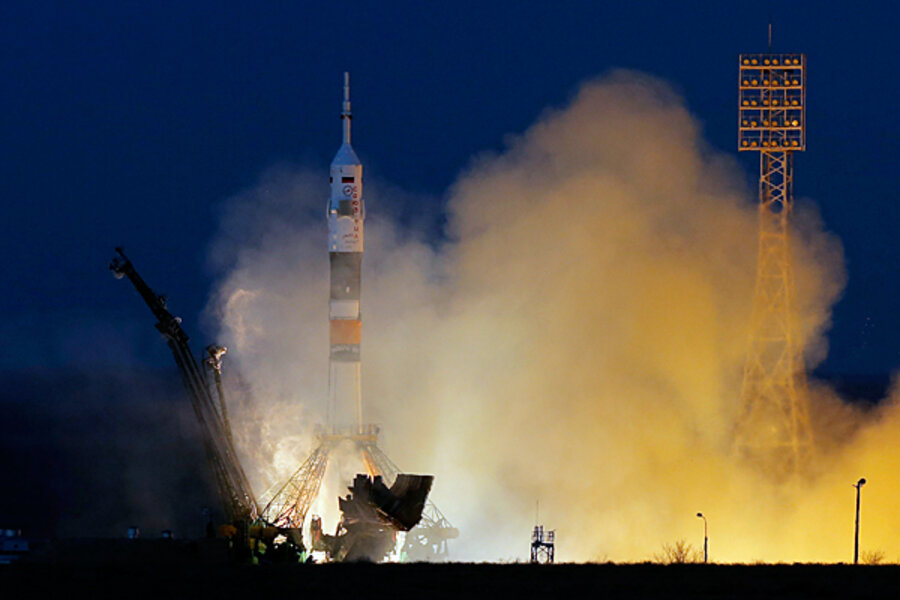Russia sets its sights on the moon - again
Loading...
| Moscow
Nearly 40 years after abandoning its lunar exploration program, Russia says it's preparing to shoot for the moon again.
The Russian space agency, Roskosmos, announced this week that it will send a series of at least four robot probe missions to the moon in 2015, to be followed by a manned mission no later than 2030. All of this activity will be launched from a new $1 billion space center, Vostochny Kosmodrome, which is under construction in the Amur region of Russia's far east.
Some experts insist that the plans are serious, and that they represent part of a concerted Russian effort to overcome a string of space setbacks in recent years, which seemed to hit so consistently that at one point Russian space officials blamed them on foreign sabotage.
The mishaps included a chain of crashes involving Russia's space workhorse, the Proton rocket booster. Moscow's plan to build a satellite-based global positioning system to rival the American GPS network ran into repeated problems, including the loss of several critical satellite payloads.
The most galling was the complete loss of the ambitious Mars probe, Phobos-Grunt, which had been designed to bring back rock and soil samples from the Martian moon Phobos. The probe's engines stalled in Earth's orbit, and despite weeks of frantic efforts by ground controllers, it crashed into the Pacific Ocean a year ago.
"We were so depressed after what happened to Phobos-Grunt, that the decision was made to turn to more simple and readily accessible projects. The moon is a step to all the rest," says Igor Lisov, columnist with the Russian space journal Novosti Kosmonavtiki. "The timing is reasonable, the plan is logical, and there's clear understanding about what to do and when to do it," he says. "It's a matter of state interest."
The first flight, slated for 2015, will see a 1.2 ton lunar lander called Luna-Glob (Moon Globe) deposited on the moon's surface to search for water, take soil samples, and beam back its findings to Earth.
"We will begin our exploration of the moon from there," Roskosmos chief Vladimir Popovkin told Russian journalists yesterday.
Further missions, including three satellite observatories and two lunar landers, will target the moon's north and south poles, where signs of water have been noted, with the ultimate aim of establishing a fully robotic Russian lunar base, Mr. Popovkin said.
Roskosmos has also opened a $300,000 tender to develop a design for a heavy rocket that would be capable of powering a manned mission to the moon by 2030. Popovkin said the winning design will be selected within a few months.
He added that the new rocket system, capable of supporting manned spacecraft, should be ready by 2020.
But some experts argue that the new plans are just another symptom of the organizational disarray and technical ineptness that has overtaken the once mighty Soviet space program and, despite dramatically increased funding in recent years, few of the schemes are likely to be seen through.
"I don't think these declarations of our officials should be taken too seriously. They seem to change regularly, and with no good reason," says Andrei Ionin, an expert with the government-linked Tsiolkovsky Space Academy in Moscow.
"There is no serious strategy of development. Instead we see space officials rushing about over the past couple of years without any positive results … State financing is growing, so officials want to demonstrate that the money is not being allocated in vain. But this has all the earmarks of a pure PR campaign," he adds.






